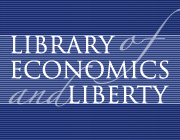
Harry Markowitz |

Say, for example, shares in Exxon and in General Motors have a high risk and a high return, but one share tends to go up when the other falls. This could happen because when OPEC raises the price of oil and, therefore, of gasoline, the prices of gasoline producers' shares rise and the prices of auto producers' shares fall. Then a portfolio that includes both Exxon and GM shares could earn a high return and have a lower risk than either share alone. Portfolio managers now routinely use techniques that are based on Markowitz's original insight.
Markowitz earned his Ph.D. at the University of Chicago. He has taught at Baruch College of the City University of New York since 1982.
"Portfolio Selection." Journal of Finance 7, no. 1 (March 1952): 77-91.
Portfolio Selection: Efficient Diversification of Investments. 1959. Reprint. 1970.
